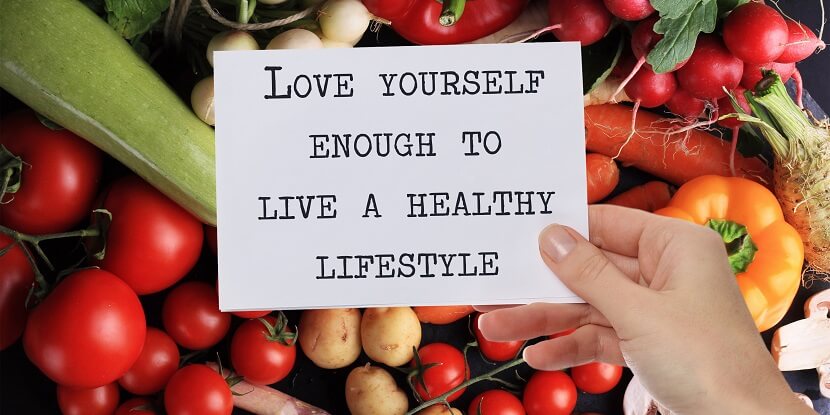Dietary Strategies for Getting Back on Track

It is hard to believe that the COVID-19 pandemic began over one year ago. Some days it feels like we have been wearing masks and social distancing forever. Other days, it seems like the pandemic just began. For many of us during this past year, life has felt out of control. We have deviated from our usual daily routines, and this has affected our sleep, exercise and eating habits. All too aware of this, we are wanting to reestablish our routines or at least develop a “new normal”. As the Dietician at NaturoMedica, I have witnessed firsthand how many of us are struggling with overeating and consuming “comfort foods” such as processed food, sugar, and baked goods as a means to deal with stress. If you can relate, I want to assure you that you are not alone. Keep reading for ways to help get yourself back on track!
“Emotional eating” is a term used to describe the phenomenon of eating in response to an emotional state, rather than physical hunger. While eating to cope with stress is okay to do every once in a while, this response can lead to problems if it becomes your only coping mechanism. If you find that you often resort to emotional eating when feeling stressed, now is a good time to add new coping strategies to your toolkit! Engaging in activities such as going for a walk, performing intentional movement, journaling, calling a friend, or simply listening to music or watching a favorite show can help soothe and distract you and discharge some of your stressful or negative energy.
Sugar is the most common food that people crave due to boredom, stress, or any emotion. Not surprisingly, I am often asked by my patients, “how do I stop my sugar cravings?”. First, it’s important to recognize that it is impossible to get rid of all cravings. While you can teach yourself to ignore your cravings, this approach generally results in overeating or bingeing on those foods later.

One way to reduce sugar cravings is to make sure you get enough good quality sleep. When sleep deprived, our body’s hunger hormone, called ghrelin, rises and results in increased hunger and cravings. At these times, our bodies want quick energy such as that from a sugar spike. You may recognize this as a craving for easy-to-digest carbohydrates such as bread, desserts, or candy. Getting 7- 9 hours of sleep each night can help keep our ghrelin levels under control and lead to a decrease in both hunger and cravings. To help achieve a better night’s sleep, I recommend creating a bedtime routine to signal to your body that it’s time to wind down. A good bedtime routine might include strategies such as getting up at the same time every day, avoiding caffeine after lunchtime, and turning off all electronics at least 30 minutes before going to bed.
Another way to reduce sugar cravings is to make sure you are eating well balanced and satisfying meals throughout the day. This means getting enough protein, vegetables, healthy fat sources, complex carbohydrates, and fiber at your meals. An example might be a turkey or veggie burger topped with avocado and tomato with a side leafy green salad and quinoa. When we eat a nutrient deficient diet, our brain doesn’t feel satisfied and continues to send us signals that it wants more food, which, unfortunately, tends to be sugar.
I always say that although eating feels good in the moment of being stressed, it is not fixing the problem. I encourage you to be curious about your eating choices and situations. Do you find yourself eating more or craving specific kinds of foods when you feel a certain way? Does eating more or having these kinds of foods make you feel better or worse? Rather than being self-critical, these questions are meant for you to better understand your emotions and choices so that you can make positive changes in how you respond to stress. Knowing why you want to eat is the first step. Taking action to create more mindful eating habits is the next.

Two strategies to prevent overeating and emotional eating are to follow a meal schedule and to utilize a meal plan. A typical meal schedule may look something like this: breakfast between 8 and 9 am, lunch around noon, a snack between 3 and 4 pm, and dinner between 6 and 7 pm. By providing structure to your eating patterns, the number of times you go to the pantry or fridge looking for something to eat is reduced.
It is best to not skip meals or to go too long between eating as this can lead to low blood sugar, also known as low blood glucose. Because your brain’s preferred fuel is glucose, you will likely experience increased feelings of hunger and cravings for simple carbohydrates such as crackers, cookies, and breads when your blood sugar levels are low. By minimizing the gaps between meals, we are more apt to make a healthier food choice containing protein, healthy fats and fiber (all which keep us fuller for a longer period of time). The goal is to eat every 3-4 hours in order to keep your blood sugar consistent and to avoid feeling ravenous. I suggest having a snack between lunch and dinner, since the later afternoon is a common time to feel hunger and crave something sweet. Some of my favorite snacks include:
- Hard boiled eggs or a tuna pack mixed with avocado
- Cherry tomatoes, diced avocado, salt, pepper, a drizzle of olive oil, and crumbled goat cheese
- Chia seed pudding (see recipe below)
- Sliced cucumber with hummus and turkey on top
- Mixed nuts/seeds with berries
- Energy bites (see recipe below)
Meal planning can be very intimidating, but I assure you that once you start, you will realize how helpful it is for you to consistently eat healthy without stress. My first tip is to set aside time during the weekend to plan. Make use of the many free meal planning templates online and take note of your upcoming week’s activities. Let’s say you need a quick meal on Monday night because the kids have soccer -- plan for a “fix-it and forget-it” slow cooker meal that will be ready when you are. Pencil in the meals you intend to make that week, keeping in mind how much time you’ll have each night to prepare dinner.
If you have never meal planned before, start small! Begin with just 2 to 3 days’ worth of meals and add additional days once you are more comfortable with the process. After selecting the recipes you plan to make, create a grocery list for any items you may need. Having a grocery list (along with not going while hungry!) is crucial for grocery store visits. We all have experienced what happens when we go into a store feeling hungry and not having a plan of what to buy. (Did someone say cookies?) The hardest part of meal planning is starting, but once you do, it becomes infinitely easier. Make sure to scroll down to see some of my favorite meal prep recipes!
When establishing healthier habits and ways of thinking, sometimes a jumpstart is needed to get you firmly back on track. At NaturoMedica, we offer Xymogen’s 6 Day Detox Kit which can help disrupt unhealthy patterns and overcome addictions in exchange for habits that promote better health. This detox kit supports the liver as well as other systems involved in detoxification and metabolism. It is excellent at eliminating toxic accumulations resulting from both external sources (such as pesticides, insecticides, and herbicides) and internal sources (such as stress and inadequate nutrition) which lead to undesirable changes in metabolic function. This kit is a turnkey solution. It contains concise instructions regarding dietary choices, supplements to support detox and a daily cleansing shake. Be sure to ask your NaturoMedica provider if this kit can be beneficial to you.
This has been a rough year for most people, but one thing that I have learned from this pandemic is that I will never take my health for granted again. I’d love to help you reach your health goals and to help you find a sustainable, enjoyable, and health-promoting way of eating. Moving forward, I hope you will join me in making your overall health a priority.
Recipes
Chia Seed Pudding
5 min Overnight Serves 1Chia seeds, hemp seeds, and flax seeds in almond milk or a milk of your choice make a delicious, satisfying pudding. Add a touch of vanilla and top with berries and/or nuts.
Energy Bites
15 min 30 min 16 BitesPecans, walnuts, dates, coconut, and cocoa powder make an easy on-the-go protein snack.
Slow Cooker Chicken Curry with Sweet Potatoes
30 min 7 hours Serves 6A nice comforting bowl of curry is all-the-more satisfying when you can just let a slow cooker do all the work.
Sheet Pan Pesto Salmon & Veggies
15 min 15 min Serves 5Oven-baked salmon is simple and delicious. This recipe is easily customized with a variety of veggies.
If you feel like you need extra help to get back on track, I would love to help you. Schedule a complimentary 15 minute appointment with me in person or via telemedicine and we can determine how I can help.


